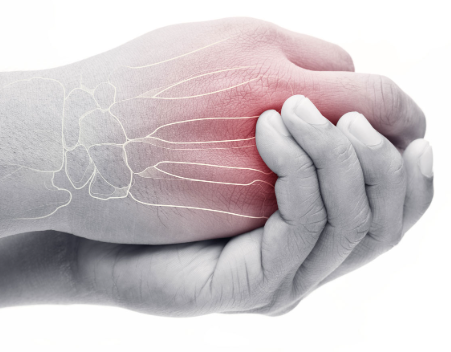Understanding the True Impact of Fibromyalgia on Daily Living
Living with fibromyalgia often feels like carrying an invisible weight. This chronic condition affects millions worldwide, yet its struggles are frequently misunderstood. Understanding its depth is the first step to reclaiming control over your life.
How Fibromyalgia Affects Mind, Body, and Emotions
Fibromyalgia is far more than widespread pain. It seeps into your energy levels, your ability to think clearly, and even your emotional well-being. This condition can trigger:
- Chronic fatigue
- Brain fog
- Digestive issues
- Anxiety and depression
- Sleep disturbances
Recognizing these layers helps to approach healing from a holistic perspective rather than chasing isolated symptoms.
Breaking the Silence: Listening to Your Body’s Whisper Before It Screams
The Subtle Symptoms Often Overlooked
Often, fibromyalgia symptoms start small — a little stiffness here, a wave of tiredness there. Paying attention early allows for quicker intervention.
Signs include:
- Sensitivity to noise, lights, or smells
- Restless legs
- Mood swings without clear cause
- Digestive discomfort
Your body sends signals daily. Learning its language is a secret many thriving fibromyalgia warriors know well.
Crafting Your Personalized Pain Management Blueprint
The Power of a Tailored Self-Care Routine
No two journeys with fibromyalgia look the same. Your personalized routine might include:
- Morning stretching rituals
- Midday mindfulness breaks
- Hydration reminders
- Evening body scans
Consistency matters more than perfection.
Essential Daily Practices That Reduce Discomfort
Little daily habits create big results over time:
- Warm baths with Epsom salts
- Gentle yoga or tai chi
- Journaling for stress release
- Heat or cold therapy
Nutrition Secrets Only Thriving Fibromyalgia Warriors Know
Anti-Inflammatory Foods That Calm the Body
Foods that support healing include:
| Food Group | Benefits |
| Leafy Greens | Reduce inflammation |
| Omega-3 Rich Fish | Eases joint stiffness |
| Berries | Rich in antioxidants |
| Turmeric & Ginger | Natural pain relievers |
Foods to Avoid That Might Trigger Flare-Ups
Certain foods can worsen symptoms:
- Processed sugars
- Artificial sweeteners
- Gluten (for some)
- Excessive caffeine
Tuning into food triggers is a powerful secret to feeling better.
Movement Without Misery: Redefining Exercise with Fibromyalgia
Gentle Workouts Proven to Support Healing
Forget “no pain, no gain.” With fibromyalgia, less is often more.
Best exercises include:
- Swimming or aqua therapy
- Walking in nature
- Gentle pilates
- Stretching flows
How to Stay Consistent Without Overdoing It
Use tools like:
- Activity tracking journals
- Setting micro-goals
- Scheduled rest days
- Listening to fatigue cues
The Hidden Benefits of Restorative Sleep Techniques
Creating a Sleep Sanctuary for Quality Rest
A supportive sleep space can include:
- Weighted blankets
- Essential oils like lavender
- Blackout curtains
- White noise machines
Evening Rituals That Actually Work
Try:
- Limiting screen time
- Drinking herbal teas
- Practicing deep breathing
- Gentle bedtime stretches
Harnessing Mindset Shifts for Emotional Resilience
Reframing Challenges Into Opportunities for Growth
Living with fibromyalgia teaches patience, creativity, and empathy — strengths that build resilience.
Daily Mental Practices for Inner Peace
- Gratitude journaling
- Visualization techniques
- Guided meditation
- Positive affirmations
Building a Dream Team: Healthcare Allies Who Truly Listen
What to Look for in a Compassionate Medical Partner
Choose providers who:
- Validate your experience
- Offer holistic treatment options
- Encourage open dialogue
- Empower you in decision-making
The Surprising Power of Holistic and Alternative Therapies
Therapies Often Ignored But Worth Exploring
Managing Stress Without Feeling Overwhelmed
Stress-Relief Tools to Calm Body and Mind Instantly
- Breathwork apps
- Nature walks
- Art therapy
- Listening to soothing music
Mastering Time and Energy Like Never Before
Smart Strategies to Navigate Daily Tasks Gracefully
- Task batching
- Prioritizing essentials
- Delegating when possible
- Scheduling recovery time
Cultivating Supportive Relationships That Fuel You
Setting Healthy Boundaries Without Guilt
Communicating your limits kindly but firmly is vital to preserve energy and protect emotional well-being.
Unlocking Joy Through Creativity and Passion Projects
Why Creativity Is a Healing Superpower
Creative outlets offer distraction from pain and avenues for joy:
- Writing
- Painting
- Gardening
- Music
Financial Wisdom for Navigating Life with Fibromyalgia
Budgeting Tips for Health-Related Expenses
- Track medical spending
- Explore community resources
- Use savings apps
- Plan for wellness investments
Becoming Your Strongest Advocate in Every Arena
How to Speak Up Confidently About Your Needs
- Prepare notes for appointments
- Practice assertive communication
- Connect with support groups
- Educate family and friends
FAQs About Living Your Best Life With Fibromyalgia
What triggers fibromyalgia flare-ups?
Stress, weather changes, poor sleep, certain foods, and overexertion are common triggers.
Can diet really help with fibromyalgia symptoms?
Absolutely. Anti-inflammatory diets can reduce pain and improve energy levels.
Is exercise safe for fibromyalgia patients?
Yes, gentle movement like swimming or stretching can help manage symptoms without worsening pain.
How do I explain fibromyalgia to others?
Use clear, relatable language like “my nervous system is in overdrive” or “my body misinterprets signals.”
Are there any natural remedies that help?
Many find relief with practices like meditation, acupuncture, herbal teas, and essential oils.
What is the most important thing to remember when living with fibromyalgia?
Consistency, self-compassion, and personalized care are key to living well with fibromyalgia.
Conclusion: Living Beyond Limitations – The Journey Continues Living your best life with fibromyalgia is absolutely possible. It’s about creating a life that honors your body, nurtures your mind, and lifts your spirit. Every small change builds resilience. Every mindful choice strengthens hope. Remember, you are not defined by your diagnosis — you are defined by your courage and your commitment to thrive.
Click Here to Visit the Store and find Much More….
For More Information Related to Fibromyalgia Visit below sites:
References:
Fibromyalgia Contact Us Directly
Click here to Contact us Directly on Inbox
Official Fibromyalgia Blogs
Click here to Get the latest Chronic illness Updates
Fibromyalgia Stores

